-
TrackoBit
Manage commercial vehicles with the new-age Fleet Management Software
TrackoBit -
TrackoField
Streamline your scattered workforce with Field Force Management Software
TrackoField -
Features Resources
-
Blog
Carefully curated articles to update you on industrial trends. -
White Paper
Insightful papers and analysis on essential subject matters. -
Glossary
Explore an alphabetical list of relevant industry terms. -
What’s New
Get TrackoBit & TrackoField monthly updates here. -
Case Study
Explore the cases we solved with our diverse solutions. -
Comparisons
Compare platforms, features, and pricing to find your best fit.
-
About Us
Get to know TrackoBit: our team, ethos, values, and vision. -
Careers
Join the most dynamic cult of coders, creatives and changemakers. -
Tech Support
Learn about our technical support team and services in detail. -
Events
Check out the exhibitions where we left our marks and conquered. -
Contact Us
Connect with us and let us know how we can be of service.
ETA vs ETD: Key Differences Explained
- Author:Tithi Agarwal
- Read Time:7 min
- Published:
- Last Update: December 9, 2025
Table of Contents
Toggle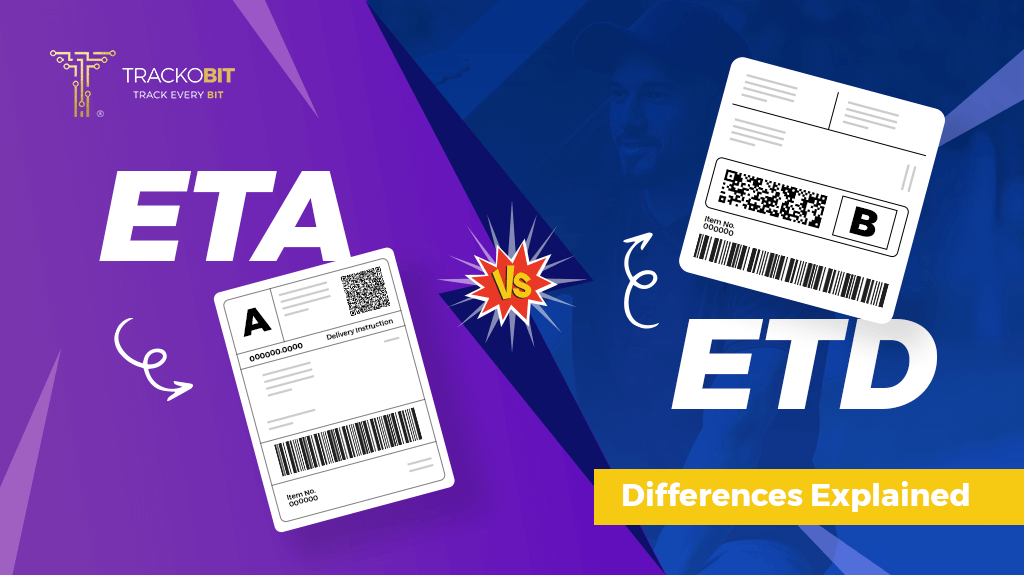
Learn the difference between estimated time of delivery (ETD) & estimated time of arrival (ETA) and why it matters to you and your business.
Table of Contents
Toggle
Planning and efficiency depend on knowing when to expect people or items to arrive. The Estimated Time of Arrival (ETA) is relevant in such situations. In this article, you will learn that estimated time of arrival is often utilized wrongly and is actually much more complicated than it seems. For planning, scheduling, and many other purposes, businesses and customers rely on ETAs (estimated time of arrival) and ETDs (estimated time of departure) (ETA vs ETD), but occasionally, it seems like nobody understands one another.
This blog will explain the most popular logistics estimates that shippers should be aware of, simplifying which estimate your customers actually require (even if they’re using the incorrect shipping term). We’ll also walk you through using TrackoMile to provide nearly effortless, highly accurate order updates.
What is the Estimated Time of Arrival [ETA]?
The term “ETA” (estimated time of arrival) in the logistics sector refers to the anticipated arrival time of a vehicle, cargo ship, or other form of transportation at its destination. Customers can use arrival estimates to approximate when the vehicle delivering their items will arrive at their location.
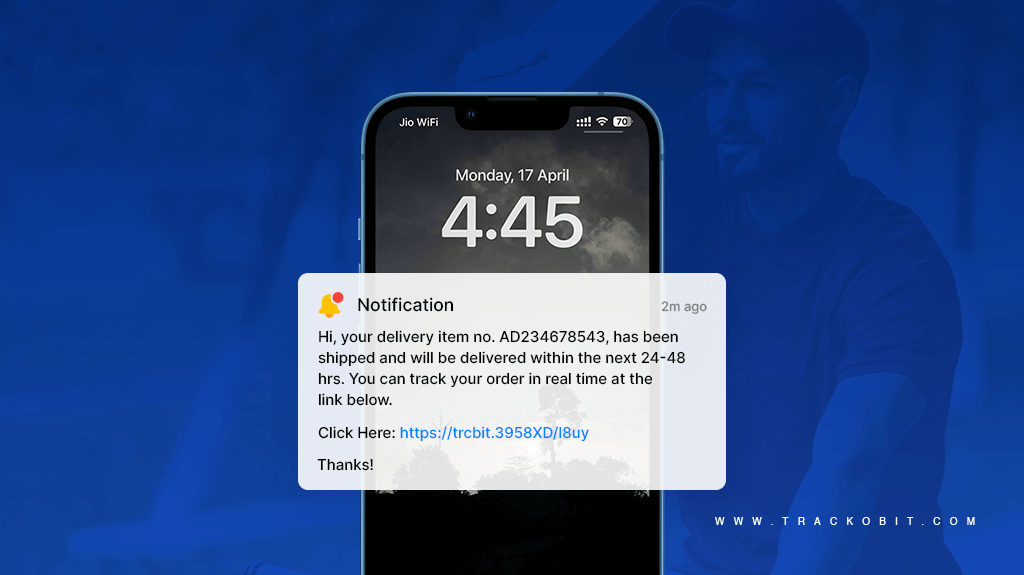
What is the Estimated Time of Departure [ETD]?
An essential phrase in logistics and transportation is Estimated Time of Departure (ETD), which denotes the estimated moment at which a shipment or vehicle is scheduled to begin its journey from a certain origin place, like a warehouse, production plant, or distribution centre.
Key Differences Between ETA vs ETD
The key difference between the estimated time of arrival and the estimated time of departure is:
| ETA (Estimated Time of Arrival) | ETD (Estimated Time of Departure) |
| Determines when an order is expected to arrive at a certain location. | Predicts when a delivery vehicle is expected to depart from the manufacturing or distribution centre. |
| Used to schedule events, control expectations, and arrange arrivals. | Used particularly in transportation and logistics, to arrange and guarantee prompt departures. |
| Helps prevent needless waiting and consumer annoyance. | Helps to avoid delays and maintain co-ordination between different operations. |
| Critical for customer satisfaction. | Important for optimizing routes and managing resources |
| Example: If a delivery person departs from the warehouse at 9 AM and the delivery stop is 30 minutes away from the warehouse, then the ETA will be 09:30 AM | Example: If a delivery person is expected to depart from the warehouse at 09 AM, then the ETD will be 09 AM. |
Factors Influencing ETA
Several things can influence a journey’s ETA. Following are some examples:
- Distance: The distance between the beginning and destination locations significantly impacts ETA. Greater distances are frequently correlated with longer travel times.
- Speed: The average speed of travel must be known to compute the ETA. While slower speeds lengthen the total trip time, faster speeds reduce it. Modifications in traffic patterns may also impact ETA.
- Weather Conditions: Unfavourable weather, including persistent rain, snowfall, or fog, can slow down traffic and possibly extend the estimated time of arrival.
Factors Influencing ETD
Several factors can influence the Estimated Time of Departure (ETD). Here are some of the key factors:
- Order Volume and Density: The number of orders to be fulfilled and their density in a particular area can impact the ETD. Higher order volumes may require more time for sorting, packing, and loading onto delivery vehicles.
- Delivery Time Windows: If customers have specified delivery time windows or preferred delivery times, the ETD may need to be adjusted to ensure that deliveries are made within these specified time frames.
- Vehicle Availability and Capacity: The availability of delivery vehicles and their capacity to handle the volume of goods to be transported affect the ETD. Ensuring that sufficient vehicles are available and properly loaded is essential for meeting delivery schedules.
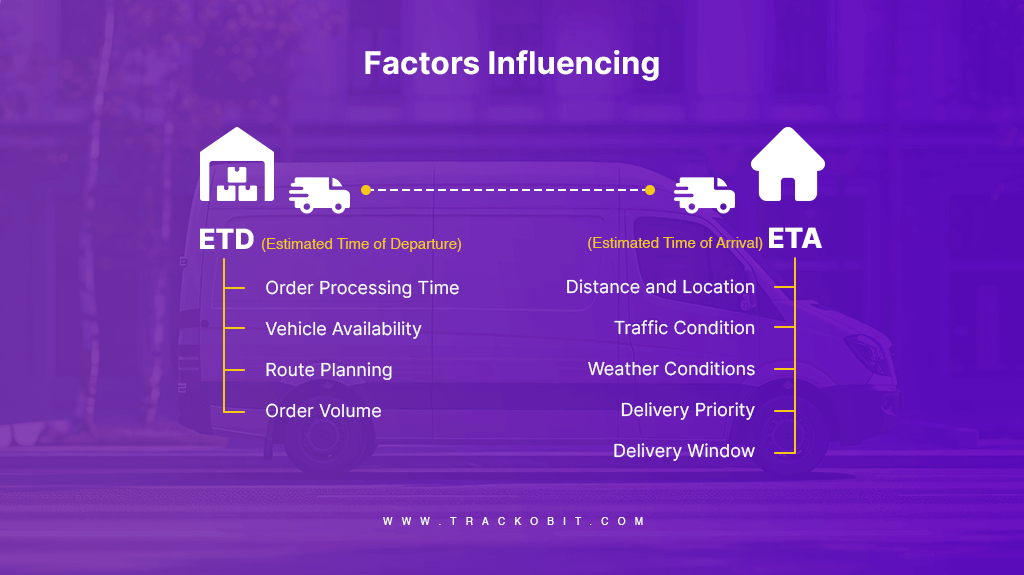
Checklist for Businesses to See if You Need Accurate ETD & ETA Forecasting
Every business involved in customer deliveries should consider ETD/ETA and whether it is a necessary element in their delivery operation. Here are a few things that you can check to see if ETD/ETA is something to work on in the future.
- Do your customers typically get in touch to see when packages are due to arrive?
- Do you have missed deliveries as a result of customers not being there to receive and sign for a package?
- Do you have time-sensitive or perishable goods being delivered?
- Do failed deliveries cost your business money in terms of re-delivery or storage costs until they are collected?
- Do your delivery staff have to increase the time window at a delivery site waiting for a receiving agent?
How Can You Inform Customers of Their ETA & ETD?
There are 3 key ways of communicating ETDs to your customers.
-
Phone Call
You can choose to call the customer to let them know when you intend to make the delivery after you have finished planning your route and estimated how long it will take to serve each drop. Although it is labour-intensive and physical, it is a straightforward and efficient method of informing your clients of delivery.
-
Email
It can be useful to email your customer the estimated total duty (ETD) for their package. A complete delivery management software system can automate emails and is free of cost.
-
SMS
SMS messages might be an excellent way to notify your clients of the anticipated ETD for their deliveries, particularly for contactless deliveries.
Rely on TrackoMile to Provide the most Accurate ETD and ETA
The easiest way to calculate logistics estimates and avoid any confusion caused by ETA and is to use software. Here’s how to use the live-tracking and delivery planning features in TrackoMile to calculate every estimate both you and your customer need with a high degree of accuracy—with very little effort.
Calculate Departure Time with Advance Planning
Advance planning involves planning and arranging as early as possible—days, weeks, or even a month ahead of time. Early preparation allows dispatchers to determine when a new order will leave a warehouse or storage facility. With this information, they can then inform both internal teams and customers.
Orders can be uploaded from an Excel file or other document, driver constraints can be entered and saved for further planning, and then the dispatcher only needs to select “Plan routes.” With optimised routes and schedules in place, you can notify clients exactly when their orders are scheduled to leave your warehouse or storage facility in a matter of seconds.
Routes can also be manually modified at any moment. When fresh orders come in, you can reschedule as much as you’d like up to five weeks in advance.
See Arrival Times with Live Tracking
Using a function called “live tracking,” sometimes known as “real-time tracking,” you and your clients can monitor delivery drivers’ whereabouts as they travel.
For dispatchers, live GPS tracking eliminates the amount of guesswork from ETAs. While real-time visibility doesn’t guarantee that your drivers won’t encounter traffic or have a flat tyre while travelling, it guarantees that dispatchers will be notified immediately if something goes wrong. Dispatchers can maintain the highest possible percentage of on-time delivery rates by using live tracking to fix inevitable delays.
TrackoMile uses a straight line to display dispatchers’ planned paths, with distinct colours for each driver showing their current location in the software.
When a driver is early, late, or on time, TrackoMile shows how long it took them to finish deliveries at prior stops, estimates how long will it take at the next stop, and all of this information. Afterwards, dispatchers can obtain this data in easily comprehensible analytics, allowing them to make future scheduling or routing adjustments based on hard data.
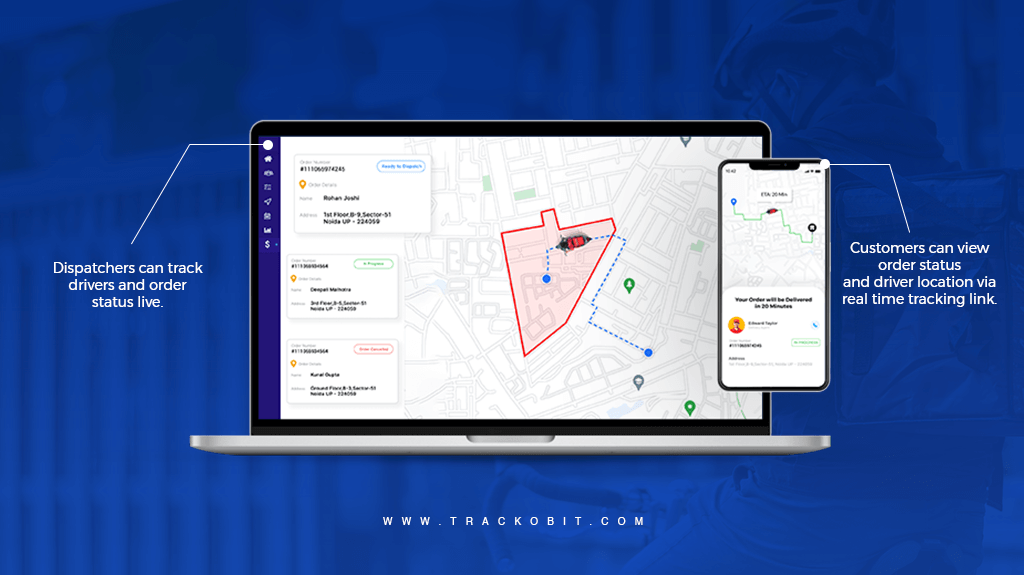
Show Customers When to Expect Delivery with Real-time Tracking Notifications
TrackoMile notifies customers with real-time tracking notifications. Customers can observe drivers’ locations on a map and receive text or email updates when the driver leaves, approaches, or completes a delivery.
According to surveys, 88% of customers desire real-time tracking of their ordered goods. Nobody likes to spend six hours staring at the same “out for delivery” notification when they’re expecting a priority delivery.
Easily Monitor Estimated Completion Time with Live Tracking
As previously stated, the anticipated completion time for a service request is its predicted completion date. Live tracking makes it simple for field service and maintenance organisations to monitor these periods. The screenshot below shows the dispatcher’s view of the live status of service personnel. By using TrackoMile, a dispatcher can easily and quickly monitor which jobs are taking longer than anticipated and which assigned driver is arriving on time.
Conclusion
ETA and ETD are crucial ideas in the logistics and transportation sectors, each with a unique function. While ETD focuses on leaving a starting point, ETA concentrates on reaching a destination. Both are essential for guaranteeing client’s happiness and running businesses effectively.
Furthermore, since “knowledge is power,” as they say, being able to precisely pinpoint the locations of your drivers and cargo helps you to deliver top-notch customer service in the logistics industry. You can obtain the necessary information with TrackoMile’s live tracking, extensive analytics, and driver insights.
Frequently Asked Questions
-
What is one difference between ETA and ETD?
The difference between ETA and ETD is linked to the importance of timing for the end-user. ETA is focused on informing customers of the time when their order will be delivered and ETD helps the delivery workforce stay on track and thoroughly estimate the time of delivery for different packages on time.
-
What is ETA delivery time?
ETA delivery time refers to the Estimated Time of Arrival for a delivery, indicating the expected time when the goods or package will reach their final destination. It helps customers and businesses plan for the receipt of their items.
-
Can ETD be changed?
Yes, the dispatcher can adjust the estimated time of departure (ETD) using robust route planning or other delivery route management software during the delivery process. This updated information can be communicated to the internal team or customers as required.
-
Can ETD be calculated using the software?
Yes, different route planners can calculate the estimated delivery time once the delivery addresses are entered into the application. Within a few clicks, you can get optimized and shortest delivery paths and timings to help the delivery driver remain on track with the delivery priority. You can also share real-time updates with the customers to ensure a quality delivery experience from the initial to the final point.
Tithi Agarwal is an established content marketing specialist with years of experience in Telematics and the SaaS domain. With a strong background in literature and industrial expertise in technical wr... Read More
Related Blogs
-
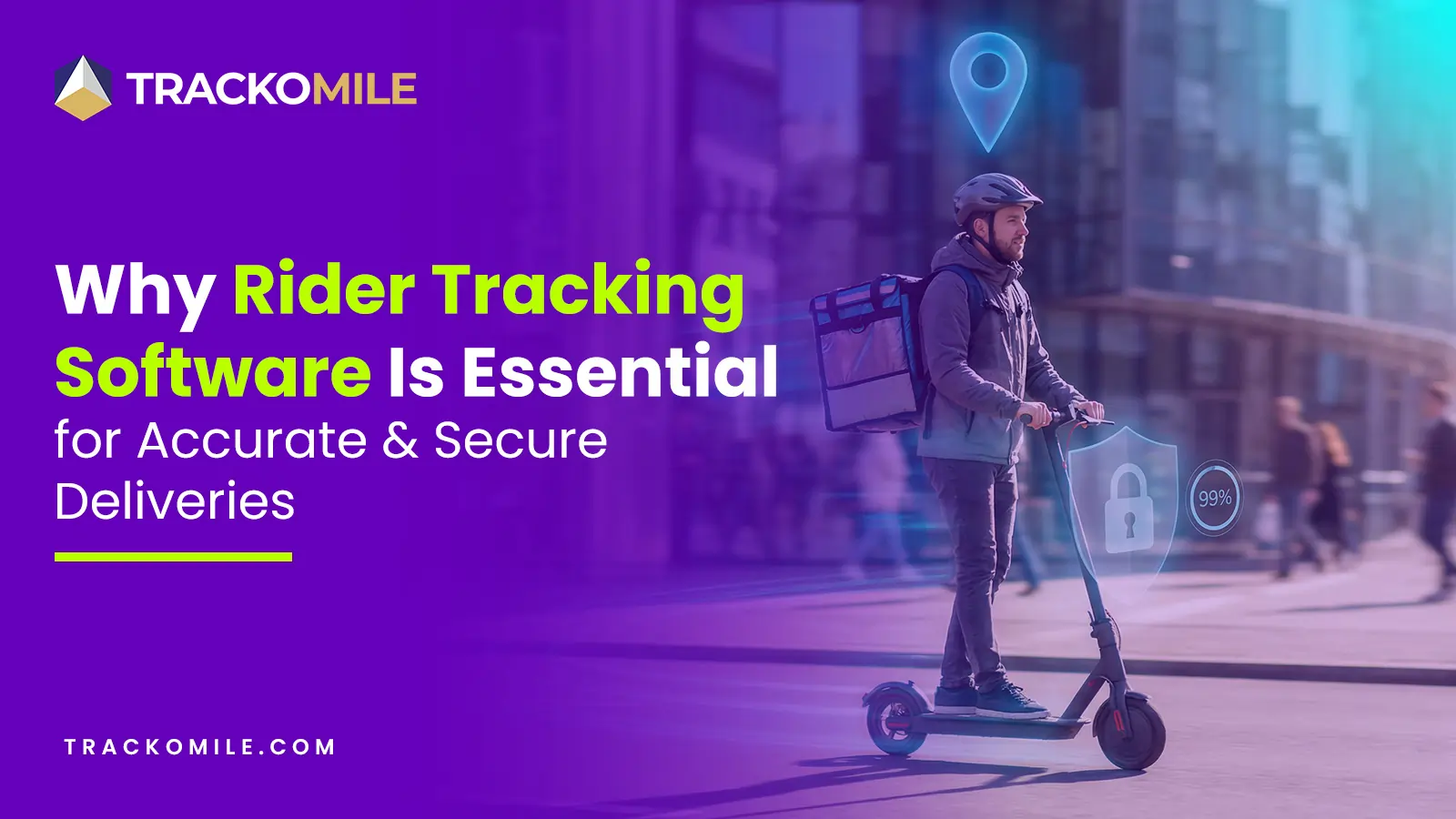
How Rider Tracking Software Improves Delivery Accuracy and Reduces Fraud
Tithi Agarwal December 8, 2025Rider tracking software improves delivery accuracy with real-time GPS visibility and automated ePOD. It also enables route optimisation and fraud…
-
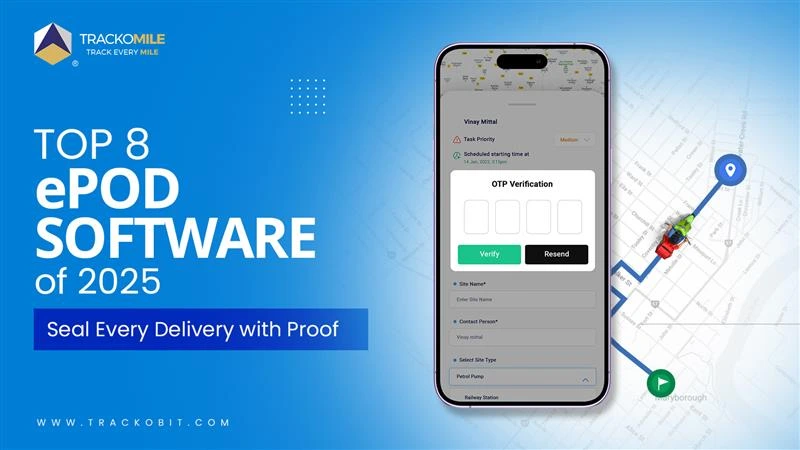
Top Electronic Proof of Delivery (ePOD) Software in 2025
Tithi Agarwal September 25, 2025Electronic proof of delivery has become the backbone of modern logistics. Explore the top 8 ePOD software in 2025 and…
-

3PL vs. 4PL: Which is Best for Your Business?
Tithi Agarwal September 25, 2024Confused about choosing between 3PL and 4PL for your retail supply chain? Read this blog to find out which is…
-

What is Payload Capacity? Payload Capacity Vs. Towing Capacity
Tithi Agarwal September 10, 2024Payload capacity is the total weight a vehicle can safely carry, and it is crucial for safety and compliance. Exceeding…

Subscribe for weekly tips to supercharge your last-mile delivery.
Your inbox awaits a welcome email. Stay tuned for the latest blog updates & expert insights.
"While you're here, dive into some more reads or grab quick bites from our social platforms!"Stay Updated on tech, telematics and mobility. Don't miss out on the latest in the industry.
We use cookies to enhance and personalize your browsing experience. By continuing to use our website, you agree to our Privacy Policy.



































